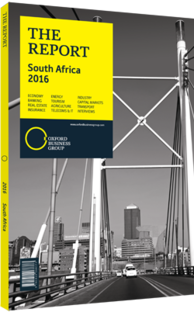Share Analysis: Sanlam - Insurance
The Company
Established in 1918, Sanlam has grown to become the second-largest listed life insurance company in South Africa, after Old Mutual. The group operated as a mutual fund until its listing on the Johannesburg and Namibian stock exchanges in 1998. In legacy of its demutualisation, Sanlam famously has the largest number of shareholders of any company on the Johannesburg Stock Exchange. A key change in the group’s strategy was the purchase of African Life in 2006. By way of this acquisition, Sanlam gained exposure to entry-level life operations in South Africa, as well as a network of partnerships, subsidiaries and alliances in the rest of Africa.
Sanlam’s emerging market focus was further expanded when it partnered with India’s Shriram Group. Initially Sanlam partnered with Shriram in just its life and short-term insurance operations, limited by India’s regulatory maximum of 26% foreign ownership. In 2012 Sanlam expanded its investment by acquiring 26% of Shriram Capital, which afforded Sanlam exposure to other entities, including listed companies Shriram Transport Finance Company and Shriram City Union Finance.
Sanlam has a diverse earnings base, with around 45% of 2014 earnings being derived from life operations, 10% from asset management activities, 9% from short-term insurance, 17% from diverse other operations (mainly secured lending), and 20% from investment returns on the group’s shareholder funds. The group’s core operations are divided into four main categories. (1) Sanlam Personal Finance (SPF), its South African retail operations, are reported as the SPF cluster. Activities span the affluent, middle-market and entry-level segments. Life lines comprise the majority of SPF earnings (around 90%), with strong operational performance relative to peers. SPF also houses Glacier, which provides financial services to affluent individuals, Sanlam Personal Loans, and Sanlam Healthcare Management, which offers medical scheme administration services. (2) Sanlam Emerging Markets (SEM) is responsible for Sanlam’s emerging market operations outside of South Africa. SEM’s reach currently span the rest of Africa, India and Malaysia. To date, SEM’s activities have been mainly in life operations, but also include short-term insurance and asset management activities. (3) Sanlam’s investments operations include asset management, wealth management, capital management (capital markets, private equity and property), international investments and investment services (multi-manager solutions, hedge funds). Sanlam’s employee benefit and UK life operations are also housed in this cluster. (4) Sanlam owns around 60% of Santam, the largest short-term insurer in South Africa, with activities spanning a range of individual as well as commercial insurance lines. Santam also owns MiWay, a direct distribution insurer in South Africa, and Santam Re, a reinsurance operation.
Development Strategy
Sanlam seeks to position itself as a diversified financial services company with an emerging market focus. Although the majority of earnings are generated by the group’s domestic operations, management is actively expanding into other emerging markets, with sizeable investments in the rest of Africa and India, as well as South-east Asia. Within South Africa, Sanlam offers all of the operations mentioned previously. The group has established presence in 14 African countries and also has operations in India, Malaysia, the UK, US, Europe and Australia. In the markets outside of South Africa, Sanlam’s service offerings generally start with life insurance, and expand to other services as opportunity allows. The CEO responsible for Sanlam’s remarkable transformation in the last 10 years, Johan van Zyl, left the group at the end of June 2015. He was succeeded by former Santam CEO Ian Kirk, who plans to continue the groups’ emerging market expansion strategy.
You have reached the limit of premium articles you can view for free.
Choose from the options below to purchase print or digital editions of our Reports. You can also purchase a website subscription giving you unlimited access to all of our Reports online for 12 months.
If you have already purchased this Report or have a website subscription, please login to continue.

